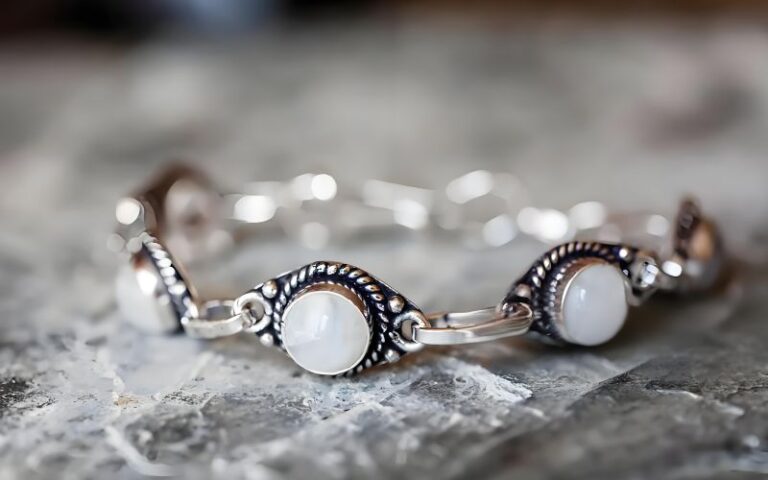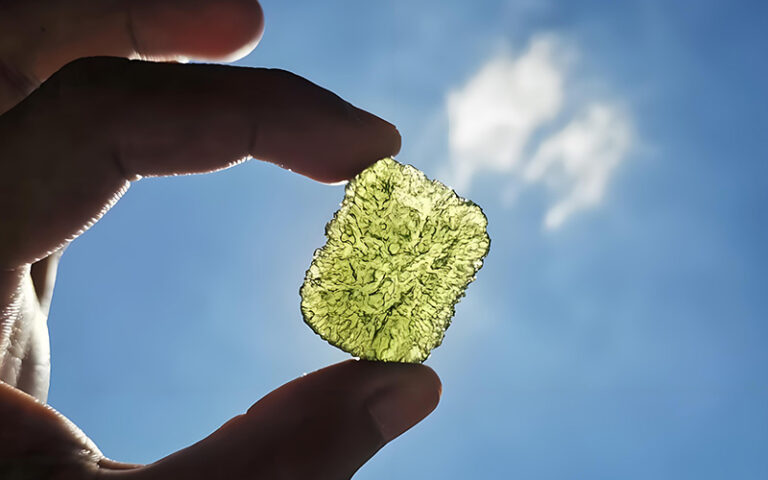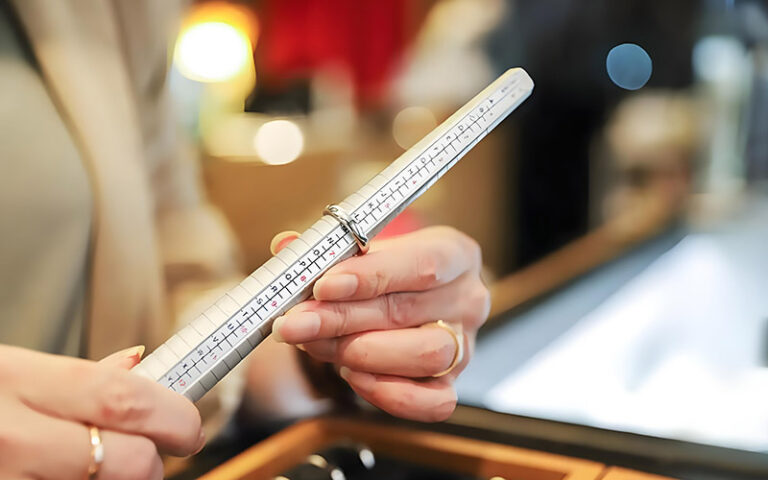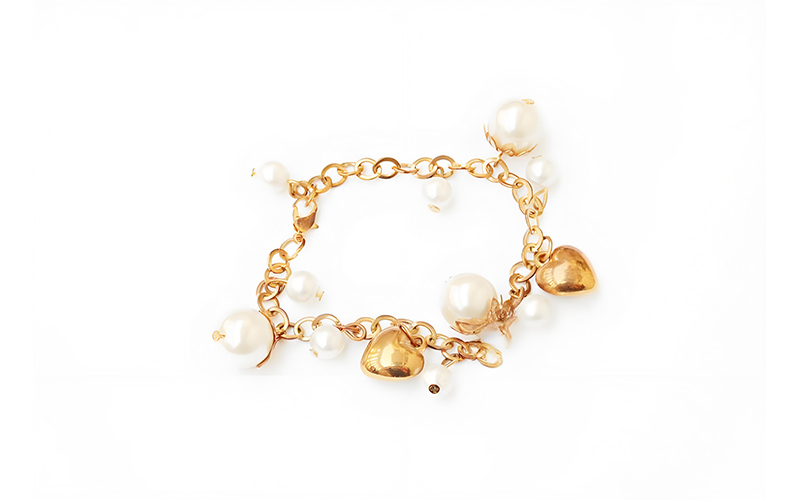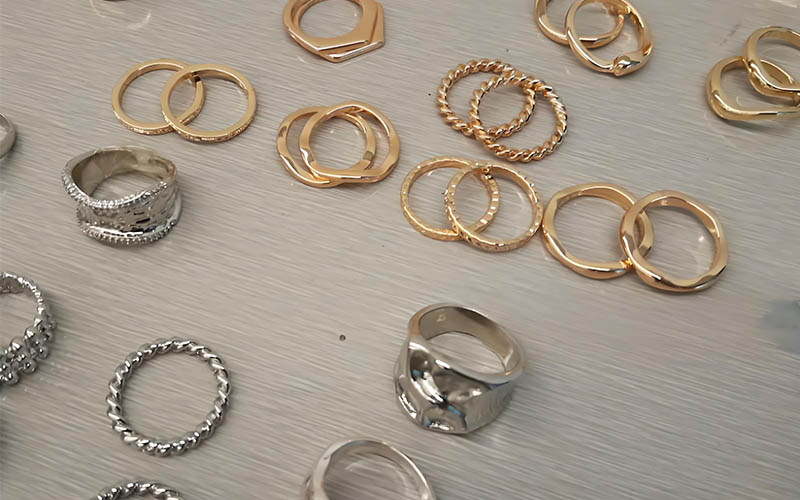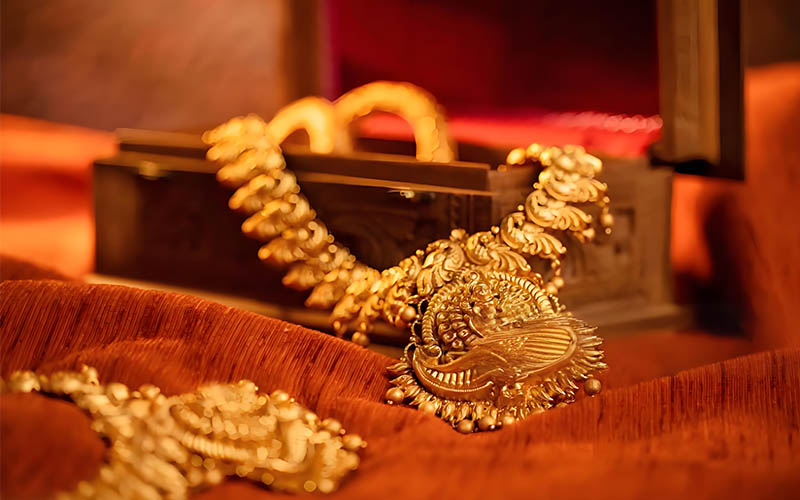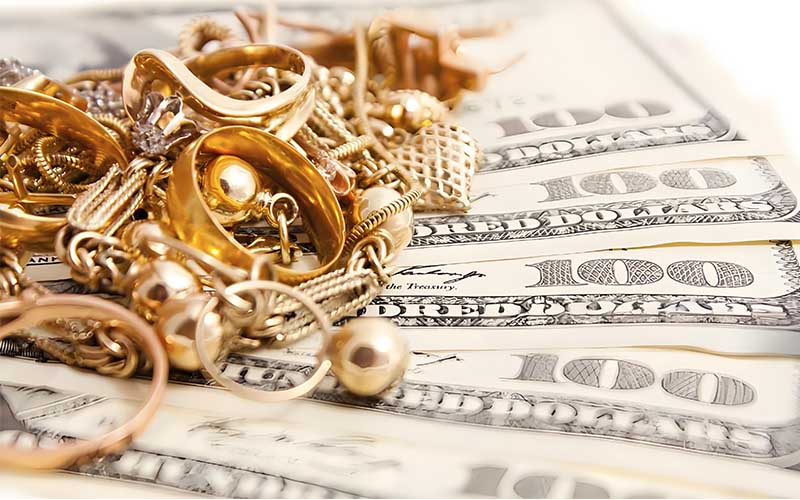
Comment savoir si un collier est en or véritable ?
Vous avez un brillant collier. Il est beau. Mais est-ce l'or véritable? C'est une grande question ! L'abondance de métal brillant n'est pas la meilleure solution. véritable affaire. Savoir si votre le collier est en or véritable vous évite des soucis. Il vous aide à connaître la valeur réelle de votre collier en or ou chaîne en or. Au fil des ans, j'ai appris des méthodes simples de vérification. Je souhaite les partager avec vous afin que vous puissiez vous aussi faire la différence. Cette histoire vous aidera à vérifier vos propres collier en suivant des étapes simples. Vous apprendrez à repérer faux or.
Table des matières
Votre collier est-il en or véritable ? Pourquoi demander ?
Pensez à votre collier. Peut-être que quelqu'un vous l'a offert. Vous avez peut-être économisé pour l'acheter. Vous aimez la façon dont il brille. Mais parfois, vous voyez des bijoux qui changent de couleur ou qui rendent la peau verte. Cela vous amène à vous poser des questions sur votre propre collier. Est-il l'or véritable?
Pourquoi cela importe-t-il que votre le collier est en or véritable? L'or véritable reste belle pendant très longtemps. Il ne rouille pas et ne change pas facilement de couleur. Faux or ou plaques d'or peut sembler bon à première vue, mais il peut s'user. La couleur peut s'effacer et laisser apparaître un métal différent sous la couche de peinture. couche d'or. (C'est le problème et l'agitation - gaspillage d'argent, mauvaise qualité). Vous voulez quelque chose qui dure et qui reste beau. Vous voulez le véritable affaire.
Savoir si votre le collier est en or véritable vous aide également à l'entretenir correctement. Et si vous avez besoin de connaître sa valeur, vous en aurez une meilleure idée. Il est bon d'être sûr de ce que l'on possède, surtout s'il s'agit d'un collier en or. J'ai appris qu'il était important d'obtenir de la qualité dès le début, là où vous savoir c'est l'or véritableL'utilisation de l'eau, de l'air et de l'énergie, met un terme à ces inquiétudes. C'est une question de confiance en devenir.
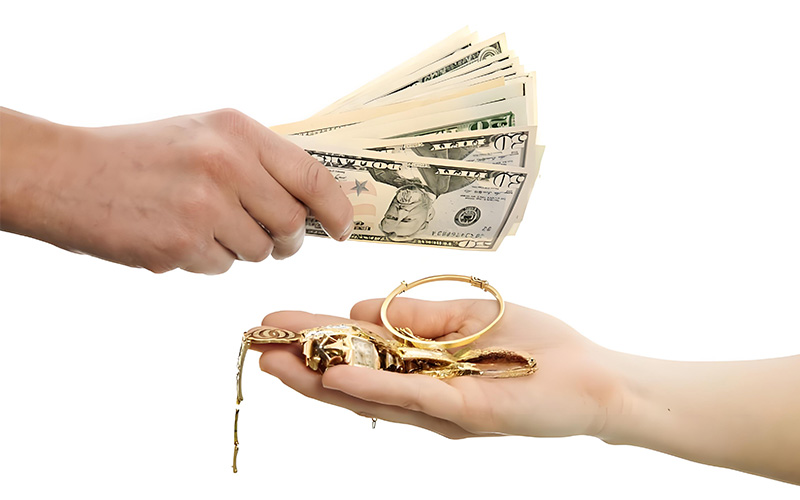
Que signifie l'expression "or véritable" ?
Lorsque nous parlons de l'or véritablenous ne voulons généralement pas dire l'or pur. Or pur est de 24 carats. C'est de l'or 100%. Il est très, très doux. Trop mou pour faire un collier ou chaîne en or. Ainsi, l'or pour les bijoux est mélangé avec d'autres métaux. Ce mélange est appelé alliage d'or.
Le mélange de l'or avec d'autres métaux comme le cuivre, l'argent, le zinc ou le nickel le rend plus résistant. Il change aussi parfois de couleur (nous parlerons plus tard des différentes couleurs). La quantité de l'or pur dans le mélange nous indique que le pureté de l'or. Nous utilisons les carats pour cela. L'or 18k signifie 18 parties d'or et 6 parties d'autres métaux. L'or 14k correspond à 14 parties d'or et 10 parties d'autres métaux. L'or 10k est composé de 10 parties d'or et de 14 parties d'autres métaux.
Ainsi, l'or véritable bijoux, comme votre collierLe programme est doté d'une bonne quantité d'informations sur la santé et la sécurité. l'or pur mélangé à d'autres métaux. Il ne s'agit pas d'un simple métal avec un fine couche d'or sur le dessus. Ce type de produit est appelé plaque d'or ou bijoux en plaqué or. Connaître la différence vous permet de vérifier si votre le collier est en or véritable. A l'or véritable bijou a de l'or dans tout le mélange de métaux, et pas seulement à l'extérieur.
Cherchez la marque secrète : le poinçon
La première chose que je fais lorsque je regarde un collier pour voir s'il est l'or véritable est de vérifier la présence d'une petite marque. Cette marque est appelée poinçon. C'est comme un cachet secret sur le métal. Il peut vous donner des informations importantes sur le pureté de l'or.
Où trouver les poinçon sur un collier? Regardez bien près du fermoir ou sur l'un des maillons. Il est généralement très petit. Vous aurez peut-être besoin d'une loupe pour la voir clairement. Le poinçon sont numérotés. Ces numéros indiquent la teneur en or en karats ou parties par mille.
Les chiffres comme 750 signifient or 18k (75% d'or pur). Des chiffres comme 585 signifient de l'or 14k (58.5% d'or pur). Des chiffres comme 417 correspondent à de l'or 10k (41,7% d'or pur). La présence de l'un de ces chiffres est un très bon signe. le collier est en or véritable. Si vous voyez des lettres comme GP, GF, RGP ou HGE, cela signifie que plaque d'or ou de l'or électrolytique lourd. Cela signifie qu'il n'est pas or massif, juste un couche d'or. Un manque poinçon ne signifie pas toujours faux ormais le fait d'en avoir un avec les bons chiffres est un indice fort pour les or véritable. Vérifier la présence d'un poinçon d'abord !
Un aimant colle-t-il à votre collier en or ?
Voici un test simple que vous pouvez faire chez vous : le test de l'aimant. Trouvez un aimant puissant. Un aimant provenant d'un magasin de bricolage ou un aimant utilisé sur une boîte à outils conviendrait mieux qu'un petit aimant de réfrigérateur.
Tenez l'aimant puissant près de votre collier. Que se passe-t-il ? Or pur n'est pas magnétique. Il ne colle pas du tout à un aimant. Les métaux mélangés à l'or dans l'or véritable (comme le cuivre ou l'argent) ne sont pas non plus magnétiques ou ne le sont que très, très faiblement.
Ainsi, un l'or véritable collier ou chaîne en or ne doit pas adhérer fortement à un aimant. Il peut bouger un tout petit peu si l'aimant est très puissant et que l'on ne peut pas le faire bouger. pièce d'or est très léger, mais il ne tire pas vers l'aimant et ne colle pas. Si votre collier tire fort et colle bien à l'aimant, il est probablement pas de l'or véritable. Il peut être faux. Cette test de l'aimant est un moyen rapide de voir si une pièce est faite d'un métal de base comme le fer ou l'acier sous l'angle d'un fine couche d'or. L'or véritable n'est pas magnétique.
Le test du poids : votre chaîne en or est-elle assez lourde ?
L'or est un métal très dense. Que signifie dense ? Cela signifie que l'objet est lourd par rapport à sa taille. Imaginez que vous tenez un petit caillou par rapport à un morceau de bois de la même taille. Le rocher semble beaucoup plus lourd parce qu'il est plus dense.
Votre collier en or doit sembler lourd par rapport à sa taille, comparé aux bijoux fabriqués dans des métaux plus légers. Prenez votre chaîne en or. Sentez son poids dans votre main. Est-il solide et lourd, ou léger et peut-être un peu bon marché ?
Ce test est plus difficile à réaliser parfaitement à la maison sans outils spéciaux pour mesurer exactement la densité. Mais vous pouvez essayer de comparer le poids de votre collier en or à un bijou dont vous savez qu'il est authentique et qu'il est fabriqué dans un métal différent, comme l'argent, et qu'il a à peu près la même taille. Vous pouvez aussi vous fier à votre intuition. Si un gros bijou objet en or est étonnamment léger, il pourrait être fausse. Les métaux plus légers qui ressemblent à l'or sont parfois utilisés pour imitation de l'or. Sachant que l'or est un métal dense vous donne un indice.
Votre peau devient-elle verte ?
Avez-vous déjà porté une bague ou un collier qui a laissé une marque verte sur votre doigt ou votre cou ? Il s'agit d'un signe très courant que le bijou n'est pas de l'or véritable.
Or pur ne ternit pas ou réagir avec votre peau ou l'air. Il reste brillant. Mais les métaux qui sont mélangés à l'or dans l'or véritable Les bijoux, en particulier le cuivre, peuvent réagir avec les huiles et la sueur de votre peau. Cette réaction peut faire virer votre peau au vert.
L'or à plus haut carat (comme 18k ou 22k) a plus de l'or pur et moins d'autres métaux, de sorte qu'il est moins susceptible de provoquer une réaction. L'or à faible teneur en carats (comme le 10k) contient plus de cuivre, de sorte qu'une réaction est moins probable. Or 10k item est plus susceptible de provoquer une légère marque verte chez certaines personnes, en particulier par temps chaud ou si elle est portée pendant une longue période. Mais si votre le collier devient vert rapidement et laisse une forte empreinte, il est probable que les les faux bijoux ou les bijoux en plaqué or où une grande quantité de cuivre ou d'autres métaux réactifs est exposée. A bijoux en or véritable (14k ou plus) ne devrait pas faire changer la couleur de votre peau de façon importante. Par conséquent, si votre le collier montre une marque verte, il pourrait être de l'or qui n'est pas l'or véritable.
Le test de la série : Le test de la série
Voici un test que vous pouvez faire avec un objet trouvé dans votre cuisine : un morceau de céramique non émaillée. Vous avez besoin d'une partie de la céramique qui n'est pas recouverte d'une peinture ou d'une finition brillante. Le fond d'une tasse en céramique ou le dos d'un carreau ordinaire font souvent l'affaire.
Trouvez un petit endroit caché sur votre collier ou pièce d'or. Doucement frotter l'or sur la surface rugueuse et non émaillée de la céramique. N'appuyez pas trop fort, vous ne voudriez pas endommager votre céramique. bijoux.
Regardez la marque laissée sur la céramique. De quelle couleur est la ligne ou Trait d'or? Feuilles d'or véritable une trace de couleur or sur la céramique. Même l'or à faible teneur en carats laisse une trace dorée. Si la marque sur la céramique est noire ou brune, il s'agit d'une trace d'or. probablement pas de l'or véritable. Cette test des stries est un bon moyen d'aider dire si un collier est de l'or véritable avec des tests simples. Soyez prudent lorsque vous frotter l'or pour ne pas égratigner l'avant de votre belle collier.

Vous utilisez de l'acide ? Comment faire le test de l'acide nitrique
Ce test est plus sérieux car il utilise de l'acide. Vous pouvez acheter test de l'or en ligne. Ces kits sont composés de petites bouteilles contenant différents acides. Ce kit test de l'acide nitrique est l'un des meilleurs moyens de s'en assurer, mais je dis toujours qu'il est préférable de le faire par quelqu'un qui sait ce qu'il fait, comme une bijoutier.
Voici comment le test acide fonctionne. Vous faites une petite égratignure sur une partie cachée de votre objet en or. Vous voulez gratter toutes les possibilités de plaque d'or couche d'or pour atteindre le métal en dessous. Ensuite, vous déposez une minuscule goutte de test de l'acide nitrique sur la marque de la rayure.
La suite de l'histoire permet de savoir s'il s'agit d'une l'or véritable. L'or véritable ne réagit pas avec acide nitrique. La goutte d'acide restera sur la rayure et n'aura aucun effet sur le métal. Si le métal n'est pas de l'or véritableL'acide réagit. Il peut faire des bulles, pétiller, devenir vert ou le métal peut disparaître sous la goutte d'acide. Les métaux réagissent différemment. Le métal réagit différemment. test acide peut également aider à déterminer le carat, car différentes concentrations d'acide sont utilisées pour différents carats (comme 10k, 14k, 18k). Une forte réaction signifie qu'il s'agit probablement d'un métal commun ou d'un métal de base. faux or. Aucune réaction ne le montre contient de l'or véritable. L'utilisation d'une solution nitrique test acide est un contrôle puissant, mais il doit être soigné.
Comprendre la pureté de l'or : Ce que disent les karats
Parlons un peu plus des carats et des pureté de l'or. Ceci est important pour comprendre la valeur et la composition des l'or véritable. Le karat est une façon de mesurer la beaucoup d'or dans un bijou. Le total est toujours de 24 pièces.
Or 24k est de 24 pièces en or sur un total de 24 pièces. Il s'agit de l'or pur. Il est très doux. Or karat est le moment où l'or est mélangé avec d'autres métaux. L'or 18k est composé de 18 parties d'or et de 6 parties d'autres métaux (comme l'argent et le cuivre). Il s'agit de l'or 75%. L'or 14k est composé de 14 parties d'or et de 10 parties d'autres métaux. Il représente 58,51 TTP6T d'or. Or 10k est composé de 10 parties d'or et de 14 parties d'autres métaux. Il s'agit de 41,7% d'or. Même Or 10k est de l'or véritableIl contient simplement moins d'or pur.
Le nombre de carats indique la pureté de l'or. Des carats plus élevés signifient plus l'or véritable. Le bijou est donc plus cher mais aussi plus doux. Les carats inférieurs sont plus durs et moins chers parce qu'ils contiennent davantage de métaux moins chers. Comprendre la pureté de l'or vous aide à savoir ce que vous avez. A poinçon indique souvent le nombre de carats ou de parties par millier, comme 585 pour 14k. Ces indications sont utiles vérifier la présence d'un poinçon de connaître les type d'or.
Différentes couleurs d'or : Or blanc, or jaune, or rose
Les bijoux en or se déclinent en différentes couleurs, mais ils peuvent tous être l'or véritable. La couleur provient des types d'autres métaux mélangés à l'acier. l'or pur.
Or jaune est la couleur la plus courante à laquelle les gens pensent. Elle est obtenue en mélangeant l'or pur avec de l'argent et du cuivre. Les différentes quantités d'argent et de cuivre lui donnent la couleur jaune classique.
Or blanc est de l'or mélangé à des métaux tels que le nickel, le palladium ou l'argent. Ces métaux donnent à l'or un aspect argenté ou blanc. Souvent, or blanc bijoux, comme un Or blanc 14k collierL'étain, qui est un métal, est recouvert d'une fine couche de métal appelé rhodium. Le rhodium est très blanc et brillant. C'est ce qui fait que le or blanc et le protège. Or blanc est de l'or véritableIl s'agit simplement d'un mélange différent.
L'or rose est créé en mélangeant l'or pur avec plus de cuivre que d'argent. Le cuivre lui donne une belle couleur rosée ou rougeâtre. Comme or jaune et or blanc, or rose est de l'or véritable. Les tests dont nous avons parlé, comme le test de l'aimant et le test de la densité, peuvent toujours fonctionner avec ces différentes couleurs d'étiquettes. l'or véritable. Les test acide peuvent nécessiter des liquides d'essai différents en fonction du mélange de métaux, en particulier pour les or blanc. Mais la couleur seule ne permet pas de savoir s'il s'agit de faux or.
Quand demander de l'aide à un bijoutier ?
Vous avez appris plusieurs façons de tester votre collier à la maison. Vous pouvez chercher un poinçon, faire le test de l'aimantPour cela, sentez le poids, vérifiez si la couleur de la peau a changé et essayez le test de la mèche. Ces tests peuvent vous donner une bonne idée si votre le collier est en or véritable.
Mais il est parfois difficile d'en être sûr. Les poinçon peut être usé. L'objet est peut-être trop petit pour certains tests. Il se peut aussi que la pièce soit très ancienne, qu'elle soit importante ou qu'elle coûte très cher. Dans ces cas-là, la meilleure personne à qui demander de l'aide est un bijoutier professionnel.
A bijoutier est un expert. Il dispose d'outils et de connaissances spécifiques. Ils peuvent effectuer des tests plus précis, comme une test acide en toute sécurité. Ils peuvent également utiliser un or électronique le testeur, qui envoie un signal à travers le métal pour mesurer sa composition. A bijoutier peut vous dire avec certitude si votre bijou est réel et peut-être même vous indiquer le carat exact. En prenant votre collier à une personne de confiance bijoutier vous apporte la tranquillité d'esprit et la réponse la plus sûre à la question de savoir si l'or est vrai ou faux.
Comment repérer le faux or : Drapeaux rouges
Mettons les choses au point. Qu'est-ce qui vous fait dire que c'est ça ? peut être faux" ? Connaître ces signes vous permet d'éviter faux or et repérer un faux or article.
Observez attentivement la surface de la collier ou chaîne en or. Si la couleur s'estompe, en particulier sur les bords, les maillons ou les parties qui frottent, et que vous voyez une couleur de métal différente et plus terne en dessous, il est probable qu'il s'agisse de plaqué or. Cela signifie qu'il a une une fine couche d'or véritable sur un autre métal. Avec le temps, cette couche s'use.
Vérifiez la couleur elle-même. Imitation or peut sembler trop brillante, trop cuivrée, ou tout simplement pas tout à fait à sa place par rapport à des produits connus. l'or véritable. Se méfier des couleurs inégales sur une même bijou.
Souvenez-vous de la test de l'aimant. Si le collier colle fortement à un aimant, c'est un très grand signal d'alarme qu'il s'agit de n'est pas de l'or véritable. De même, si le le collier devient vert rapidement sur votre peau ou laisse une mauvaise marque, il est probablement pas de l'or véritable.
Enfin, pensez au prix. Si quelqu'un vend un gros et lourd chaîne en or pour un prix qui semble beaucoup, beaucoup trop bas, il n'est probablement pas de l'or véritable. Acheter de l'or signifie qu'il faut payer pour le teneur en or. Si le prix est bas, la teneur en or est probablement très faible, voire nulle. En recherchant ces signaux d'alarme, vous pourrez apprendre à dire la différence entre bijoux en or véritable et en plaqué or.
Obtenir la bonne affaire dès le départ
Apprendre ces tests est utile pour les bijoux que vous possédez déjà. Mais qu'en est-il lorsque vous souhaitez acheter l'or véritable? Comment s'en assurer dès l'achat ? C'est là qu'il faut savoir comment les bijoux sont obtenu en mélangeant Il est important que les métaux soient correctement utilisés.
Lorsque vous achetez des bijoux à quelqu'un qui met l'accent sur la qualité, qui utilise des produits de qualité, vous pouvez vous attendre à ce qu'il y ait une différence de prix. l'or authentique des alliages dès le départ et mesure correctement les carats, vous obtenez des alliages de qualité. bijoux en or véritable. Il n'est pas nécessaire de faire des suppositions. Il ne s'agit pas de tester un une fine couche d'or véritable sur un métal de base ; il s'agit de faire en sorte que l'ensemble de l'objet soit fabriqué en métal de base. alliage d'or véritable. Mon propre travail m'a appris que la qualité et la certitude viennent de la fabrication, de la justesse des matériaux et du processus.
Lorsque les bijoux sont fabriqués avec soin, à l'aide de l'équipement adéquat, il est possible d'obtenir des bijoux de qualité. alliage d'or pour le carat choisi, vous pouvez être sûr que la le collier est en or véritable. C'est le véritable affaire parce que c'est ainsi qu'il a été conçu dès le départ. Ce type de qualité vous apporte la tranquillité d'esprit. Vous savez que vous avez l'or véritable qui durera et conservera sa beauté sans qu'il soit nécessaire de faire des tests plus tard pour voir s'il contient de l'or véritable. Elle est garantie par la façon dont elle a été fabriquée.


